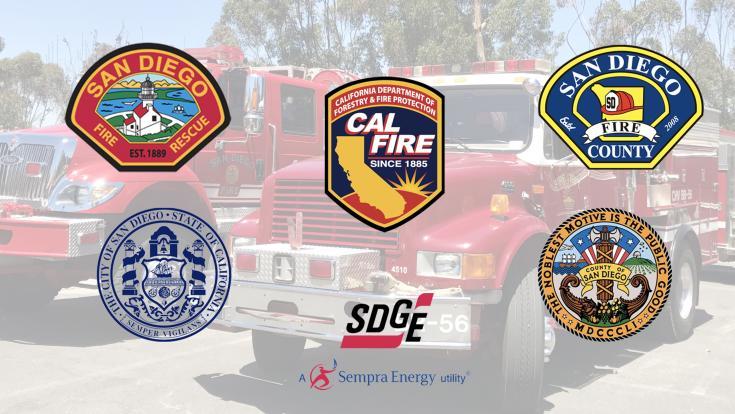The following article was originally posted by the East County Californian:
The potential for a severe wildfire season fueled by an abundance of dead vegetation from years of drought is real. It’s something local fire officials, San Diego County and San Diego Gas & Electric (SDG&E) take seriously and have been preparing for over the past several years.
According to San Diego Fire-Rescue Department Chief Brian Fennessy, we live in a fire prone region and there is no bigger threat to life and property than wildland fire in San Diego County.
“While it’s not possible to eliminate that threat, we are prepared the next time the Santa Ana winds blow, the temperatures rise, relative humidity drops and the risk of fire increases,” Fennessy said.
According to Fennessy, a lot has been accomplished over the past decade. The region’s first responders have learned how to live with fire and as a result, are far better prepared to respond and suppress wildland fires.
“I believe strongly, that as a region, we are as prepared as we can be,” he said. “But that doesn’t mean we can rest on our laurels. We need to be vigilant.”
The County, City, CAL FIRE, SDG&E and others have been collaborating for years in preparation for a severe fire season. Resources have increased including more firefighters and fire engines, critical technology has been developed and data is shared, and investments have been made to the electric system so it’s more resilient against severe weather and wildfires.
CAL FIRE San Diego Unit Chief Tony Mecham said one of the ways the region is working to keep the region safe is by leveraging technology that firefighters can use to get real-time information about wildfires.
“We’re doing some really advanced computer modeling now with satellite imagery and evaluating the weather,” Mecham said. “This information is critical so fire incident commanders know where to deploy resources.”
Mecham cited as an example a computer model created by SDG&E that analyzes wind, temperature, humidity, vegetation and topography to create real-time images that firefighters can use to accurately predict where a wildfire is spreading.
According to San Diego County Supervisor Ron Roberts, the County has added three firefighting helicopters to the region’s fleet in recent years. Another substantial change is the addition of an Aircrane to the fleet during the wildfire season.
It’s the eighth consecutive year SDG&E has contracted to bring the Aircrane, which holds 2,650 gallons of water or fire suppressant, to San Diego County for this region’s exclusive use. It would take seven typical fire helicopters to deliver the same amount of water.
Roberts said the County has invested more than $406 million to raise the level of wildland firefighting capabilities since 2003.
Among the most prominent accomplishments has been the creation of the San Diego County Fire Authority with CAL FIRE to consolidate about 50 formerly independent fire departments.
“There’s none of this, ‘well, it’s my agency, I got to protect my agency,’” said Roberts. “We merged together to handle emergencies in a way that speaks well for the citizens of San Diego County.”
Fennessy said weather is the primary driver of wildfire in San Diego County. When there are powerful winds, coupled with very low humidity levels, hot temperatures and lots of fuel, it’s a recipe for another big wildfire, he said.
That is why SDG&E created the nation’s largest utility-owned weather network that is made available around-the-clock to fire departments, emergency services, and the National Weather Service, said Caroline Winn, chief operating officer at SDG&E.
Information compiled by the utility’s three meteorologists is used to create a daily Fire Potential Index that is used to determine when and where to position additional firefighters and utility crews.
“We are committed to working with local agencies to ensure San Diego and south Orange County are as safe as possible,” Winn said. “Everything that SDG&E invests in fire science and our fire preparedness tools are made available to our community.”
To strengthen the electric system to make it safer and more reliable, SDG&E has upgraded more than 10,000 wood poles with fire-resistant steel poles, many in high-risk fire areas.
All of those involved in this public-private partnership agree that collaboration is key to help keeping residents as safe as possible from our region’s number one threat—wildfires.
For more information on the collaborative efforts, you can visit SDGEnews.com. For more information on how to prepare your family before an emergency arises, visit Ready, Set, Go! at sandiego.gov/fire/safety/tips/readysetgo.


